I’m sitting at a bar being served shellfish by two sisters in their 60s, and I’m reflecting back on the day just gone. I have looked up in awe at the gilded woodwork of Igreja de Santo António. I have bought, directly from the artist who made it, a beautiful piece of jewellery inspired by the Atlantic coast. Over lunch, I’ve savoured the flavours in small plates of smoked sausage from Monchique and Bacalhau à Brás. I’ve eaten not one, but two, exemplary pastéis de nata. And I have walked along the Algarvian coast at twilight.
All in all, it’s been a perfect day in Lagos, a gem of a city on the south western edge of the Algarve’s famous Golden Coast.
Lagos is home to about 30,000 people. Its rich 2,000-year history shows up in its squares and streets, in the blend of renaissance and Moorish influences in the architecture of its fortresses, castles and chapels. A medieval city wall hugs the city’s centre, a collection of cobblestoned lanes and small streets with sudden uphill trajectories, tight corners and a one-way driving system.
Márcia Neto is an artist and jeweller who creates spectacular pieces from Atlantic coast shells and coral, and a highlight of our visit to Lagos is stumbling upon her workshop and store. She was born in Nazaré, a place famous for its big waves, and studied sculpture at the Faculty of Fine Arts of Lisbon. She has been living in Lagos for 10 years. Her pieces take their inspiration from the natural landscape that is so easily accessed from Lagos, with items ranging in price from €50 to €250.
Neto started out selling her jewellery in the street markets in Lagos. Her business grew and she opened her store, Márcia Neto, on Rua Infante de Sagres within the city walls in 2021.
“In Lagos, we live with one foot in the sea and the other in the countryside,” Márcia tells me. “We live between a sunset at sea and the almond blossom in the fields. Lagos has a lot to discover, many walks to do, as well as a lot of local and foreign people to learn from. What made me stay was the feeling that I could always learn more.”
Even over the course of a weekend, it’s not hard to understand the draw of the place.
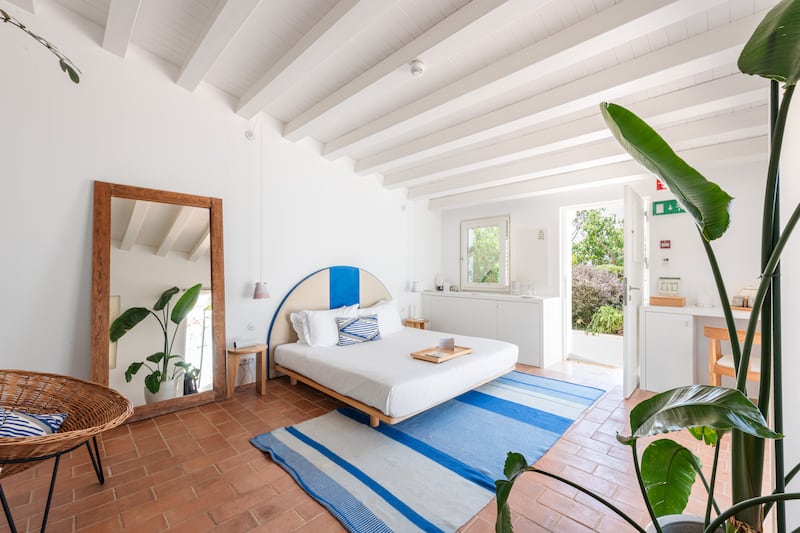
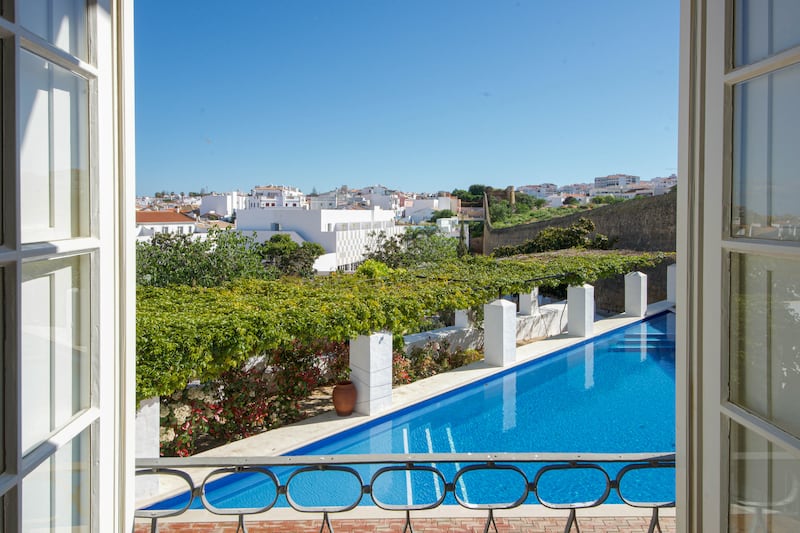
Spending a long weekend in Lagos is an easy task, and it can be a luxurious one if you feel like splashing out. We stayed at Casa Mae (from €205 per night). Designed and owned by hotel managers and publishers Veronique Polaert and Christian Kraus, this boutique hotel complex is tucked into the ancient walls of the city’s historic centre. It feels like a haven and a home: locally produced natural skincare brand Oliófora provides shampoo and goodies for the rooms, and there are rugs and tapestries by Célia Esteves, aka Rugs by GUR, who creates modern designs using traditional Portuguese techniques.
On a budget and still within the city walls, Olive Hostel Lagos is a small hostel with a bohemian vibe in the city centre, with a private room from €60 per room and shared dorms from €27 per person. Then there’s Casa Margô, also within the old city walls, a traditional Pallazetto from the 17th century that now houses 14 studios and apartments, with a shared pool. Studios start from €100, giving you that sense of history without making your savings account history.
Museums
Our perfect day in Lagos started with a breakfast of poached eggs and crispy kale from the garden at Casa Mãe. Set up for the day, we headed off on the gentle seven-minute amble from our hotel to the centre of this historic city.
A visit to the Museu de Lagos Dr José Formosinho is essential. This newly refurbished building amalgamated existing museums under one roof, and shows craft heritage, art and archeological artefacts in a fully accessible space. The paintings of Jaime Murteira, exhibited alongside Braille aids, are paired with an installation celebrating palm, basketry and furniture-making. The museum is built around the striking chapel of Igreja de Santo António (The Church of St Anthony), famous for its gilded woodwork, and this is worth the €3 entrance fee alone.
A few minutes’ walk away, a small museum is housed in the former Mercado de Escravos, the building which was the site of the first public sale of African slaves in Europe in 1444, marking the beginning of The Atlantic Slave Trade. Some 325 people were abducted from the coast of West Africa and sold as slaves in Lagos, marking a shameful and distressing part of Portugal’s past and in our shared history as humans.
One way to connect with local artists is to visit an exhibition or attend a workshop at LAC. This non-profit cultural organisation is a shared work and exhibition space run by local artists and housed in a former prison. It hosts exhibitions and workshops throughout the year, such as Mural Painting – street art is something Lagos is known for – and ceramics workshops.
Shopping
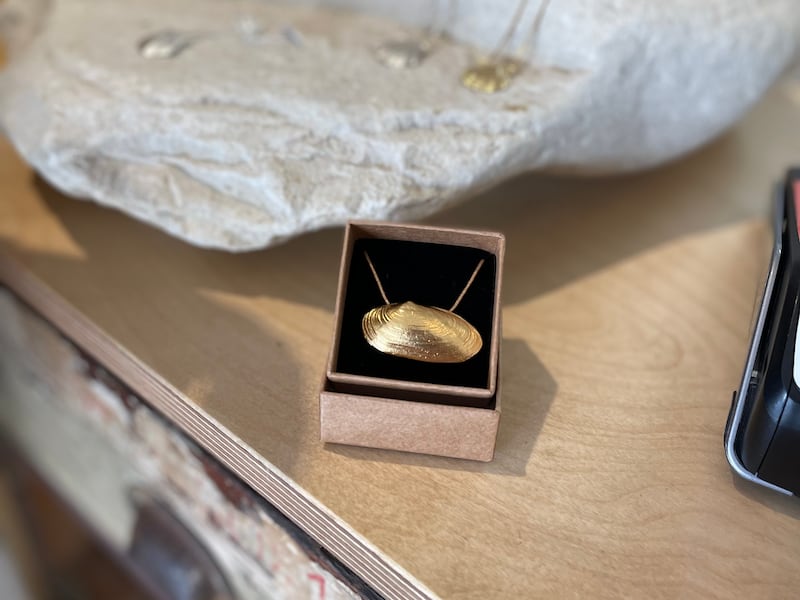
An early morning, any day of the week, spent at the Mercado Municipal de Lagos along the harbour will give you a taste of the city’s thriving seafood trade, and on Saturdays you’ll experience the farmers’ market and the abundance of home-grown produce that Portugal is blessed with year-round.
The city closes for lunch, with most shops and museums taking a break from 1pm to 2.30pm, leaving you with one option – to stop and enjoy your lunch
A short walk away from Igreja de Santo António is a shop called Olaria Nova, which translates as “new pottery”. This is a family-run pottery project, and the shop is the gift that keeps on giving. From their front door, you could be forgiven for thinking this is just a small hallway lined with a couple of pots, but persevere and keep turning the corners until you explore the whole shop.
[ Escaping to the heartlands of France for charms of the pastOpens in new window ]
On our perfect day in Lagos, we spent a lot of time on Rue Infante de Sagres. Most of our favourite little spots we found on this trip were either on or around this street, so it’s a good place to start for your own exploration.
The city closes for lunch, with most shops and museums taking a break from 1pm to 2.30pm, leaving you with one option – to stop and enjoy your lunch.
Food
Right across the lane from Márcia Neto’s shop on Rue Infante de Sagres is Goldig Cafe, a vegan cafe which is run by Márcia’s partner, Michael. When I’m paying for the truly delicious vegan avocado and “salmon” bagel – the “salmon” comprises thin ribbons of carrots marinated in seaweed: clever and delicious – I hear a familiar lilt from the waiter tapping my bank card.
“Where are you from?” I ask, and sure enough, this waiter is from Roscommon, and his name is Oisin O’Dowd. Last year, he’d been living in Lisbon and was looking for something a little more laid-back, so he tried Lagos and loved it. “They say the city triples in size in the summertime,” Oisin says, “but it still feels really relaxed.”
Elsewhere, Adoce A Vida, also on Rue Infante de Sagres, has a handy little takeaway window where you can grab pasteis de nata, served hot or cold, to go. Around the corner on Rue Primeiro de Maio is Padaria Central, a bakery with a permanent queue and pastries worth waiting for. Serving up that divine combination of firm but creamy custard centres with a crispy pastry base, this was one of the best pasteis de nata I have ever had – and, believe me, I’ve done my research.
Our favourite find was Cervejaria Ferradura. There’s no menu, there are no prices, and you order from the fridge at the front of the bar – whatever they have that day is what you’re having
For something familiar and vegan-friendly, Abigail’s Cafe, on the same lane as Igreja de Santo António, is a good choice. Black & White is a trendy speciality coffee shop serving perfect oat flat whites, and it’s another great spot for brunch or lunch, with seats inside and out in the sunshine, or you can grab a coffee to go from their takeaway shop just two doors down.
Right across the street from Black & White is Atasca-Te, a tapas place with a menu that is designed to help you sample as much of The Algarve as you can fit in your tummy. Try a small plate of smoked sausage from Serra da Monchique and the famous Portuguese dish Bacalhau à Brás, a triumph in salted cod, onion, potato and egg.
[ Holidaymakers face higher summer fares due to lack of planes, says Ryanair bossOpens in new window ]
But our favourite find was Cervejaria Ferradura. There’s no menu, there are no prices, and you order from the fridge at the front of the bar – whatever they have that day is what you’re having. The walls of this small horseshoe-shaped snack bar are covered in curios which include a giant stuffed boar’s head wearing sunglasses and a baseball cap, nautical trinkets, and football memorabilia – there’s even a poster of the 2002 Irish World Cup team, Roy Keane included.
Two sisters in their 60s with impeccable manicures have been running this show for 24 years, one as chef and one as front of house. We had a delicious slow-cooked pork stew (€8) and we went big with our shellfish – a bowl of clams were €22 and a plate of percebes (aka goose barnacles) was €10. For dessert, we chose a sticky orange and almond cake (€6).
The beach and the Golden Coast
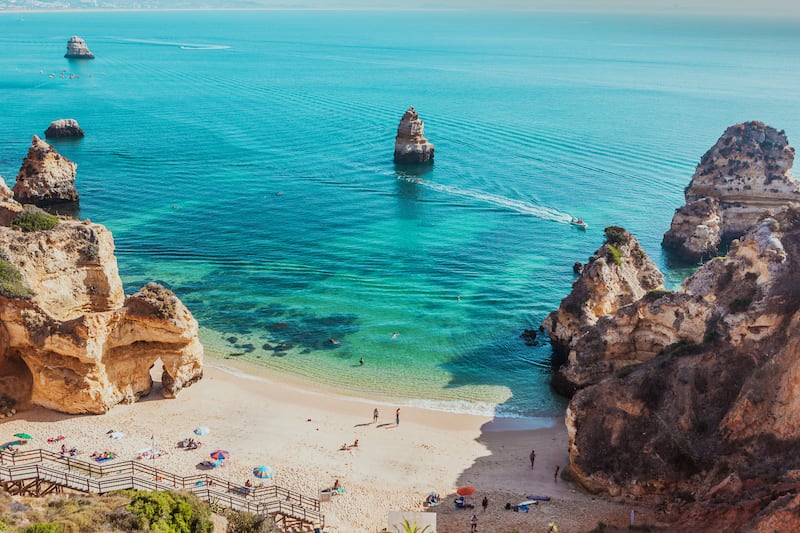
There was once a rough and ready coastal walking trail from Praia do Pinhao, just on the edge of the city walls of Lagos, all the way to the lighthouse at Ponta da Piedade. A boardwalk has been built to replace this coastal walk, to link up to the Ponta da Piedade boardwalk, which begins a little further down the coast at Praia Dona Ana. From here, you can easily walk to Farol da Ponta da Piedade, a fully functioning lighthouse built in 1913, in 25 minutes.
The boardwalk makes the experience a little more pedestrian, but it’s still a beautiful way to look over the gorgeous city beaches of Lagos, back into the city itself, and back over the Algarve – on a clear day you can see the Seven Hanging Valleys, an epic coastal trail near the famous Benagil caves. Also, you’re less likely to stumble headfirst into the beautiful sea caves and, crucially, it’s a preservation project for these cliffs and caves to make sure they’re around for many more generations to enjoy.
If you’re in the market for a more adventurous way to explore this stunning coastline, take off on a boat trip to explore the caves or choose your own adventure by hiring kayaks to paddle around the coast. This is an especially lovely treat in the off-season when you may have the coastal caves all to yourselves.
When to go
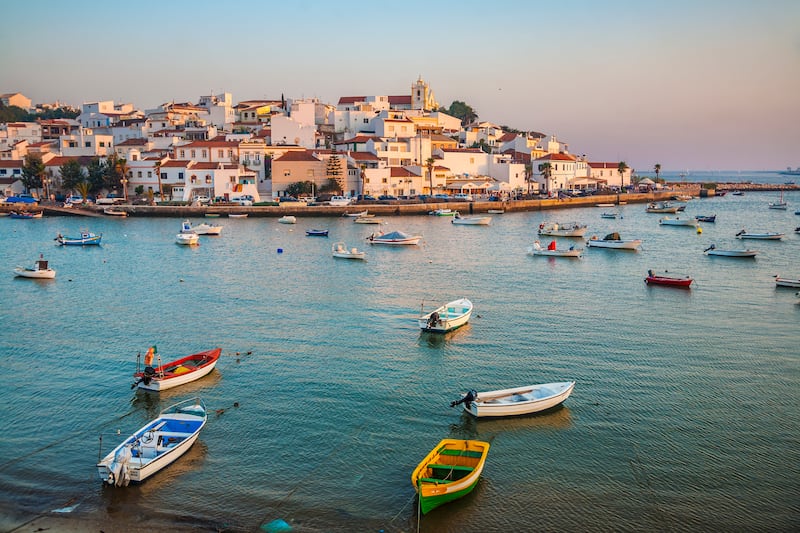
You can fly to Faro International Airport from Cork, Dublin, Kerry, Knock, and Shannon Airports. Hire a car so you can have the luxury of taking a day trip to Sagres or the Costa Vicentina for incredible coastal walks during your stay – I love Best Deal for friendly service and low prices. Or, if you don’t fancy taking a chance with the tiny, one-way lanes of Lagos, go fuss-free and take the bus from Faro International Airport, or the train from Faro city centre.










